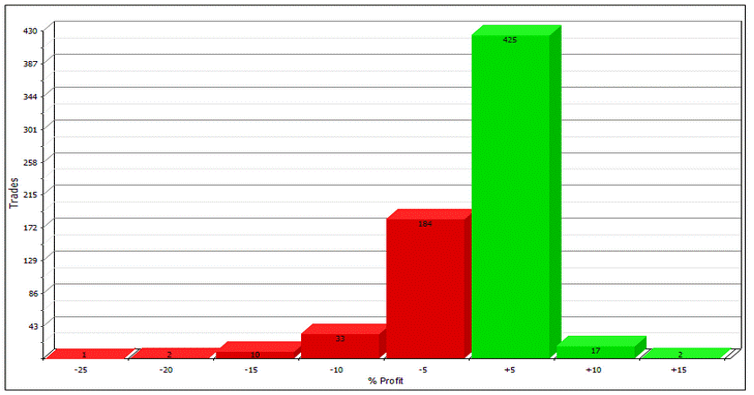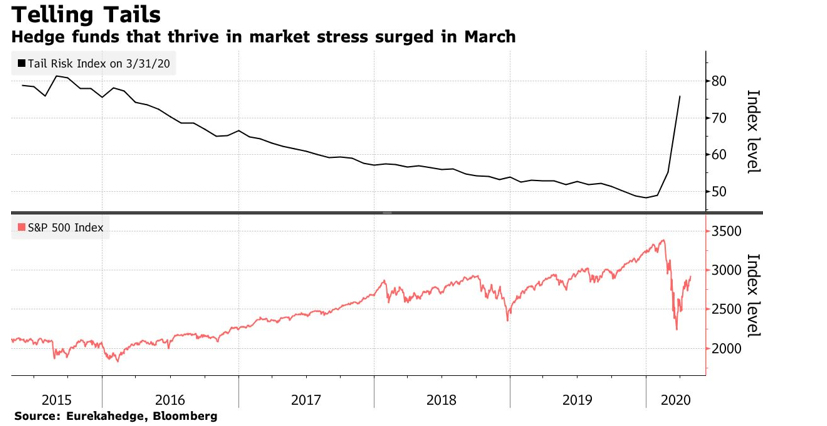Mark Spitznagel: Master of Crash-Proof Investing
- IBS Times

- Sep 19
- 4 min read
By Nithish Raj S R
Mark Spitznagel, a prominent American investor and the founder of Universa Investments, has transformed the way investors think about risk. He developed a unique “tail-hedging” or “black swan” strategy that acts like insurance against major market crashes. This method questions the traditional belief that higher returns always come with higher risk. Instead, Spitznagel argues that properly managing risk can actually reduce losses and improve long-term returns. His approach, influenced by Austrian economics, involves accepting small, regular losses, similar to paying insurance premiums, in exchange for huge payoffs during rare but severe market downturns.
Universa’s strategy has delivered major wins, especially during the 2008 financial crisis and the 2020 COVID-19 crash. Research shows that even a small investment in Universa’s fund can meaningfully improve a portfolio’s performance, making it a powerful tool for long-term investors navigating unpredictable markets.

From Teen Trader to Wall Street Maverick
Born in 1971, Spitznagel blended deep academic knowledge with real-world trading experience. He studied mathematics at NYU and started trading at just 16, mentored by seasoned commodities trader Everett Klipp. This early start gave him a unique perspective on market behavior and financial disruptions. Working at the Chicago Board of Trade and later at Morgan Stanley, he saw firsthand how major losses can severely affect long-term performance, which cemented his focus on managing risk. In 1999, he teamed up with Nassim Nicholas Taleb to launch Empirica Capital, breaking new ground with tail-hedging strategies. Although Empirica shut down in 2004 during a period of market stability, the experience sharpened Spitznagel’s belief in tail-hedging as a form of long-term financial protection.
How Spitznagel’s Bold Bet Paid Off in 2008
Spitznagel launched Universa Investments in January 2007, just before the 2008 market crash, with Taleb as an advisor. The fund’s strong performance during the crisis quickly built its reputation. By 2009, its assets had grown from $300 million to $6 billion. In 2014, Universa relocated to Miami to take advantage of favorable tax policies a move that aligned with Spitznagel’s broader goal of eliminating unnecessary financial “taxes.”
As of 2022, Universa had $19.1 billion in assets under management, handled by a small team of just 18 people a sign of how systematic and automated its processes are. Taleb remains involved, helping to keep the firm anchored in “black swan” theory. The firm’s growth reflects strong demand for downside protection amid turbulent markets.
The Radical Philosophy That Turns Risk on Its Head
Spitznagel challenges the standard view that higher risk is needed for higher returns. He uses simple metaphors like dice games to show how avoiding big losses helps investors stay on track and compound gains from a higher base. He calls this “volatility tax”: the hidden cost of big drawdowns that quietly eat away at long-term growth.
His Austrian-inspired “roundabout approach” argues that accepting short-term sacrifices like paying premiums for puts can lead to better outcomes over time. He’s also critical of central banks, arguing that their interventions create distortions that eventually result in market crashes. This is why his use of out-of-the-money puts isn’t just speculation it’s a way to protect against the system’s flaws.
Spitznagel is careful to define key concepts. “Tail risk” means the rare, extreme losses that lie at the edges of a market’s probability curve. “Black swan” events are those high-impact surprises no one sees coming. His strategy bets on the fact that markets consistently underestimate these risks, allowing for opportunities in mispriced deep put options.

The Secret Weapon: Betting Small, Winning Big in Crashes
At the heart of Universa’s approach is the use of far out-of-the-money (OTM) put options typically 30% below the current market level on major indices like the S&P 500. These options usually expire worthless, but during a sharp market drop, they can skyrocket in value, acting like financial shock absorbers.
Spitznagel commits about 0.5% of the portfolio each month to buying these puts, typically two months before expiration, and rolls them forward regularly. This ensures constant protection since no one knows exactly when the next crash will hit.
The strategy is built on the belief that markets seriously misprice these extreme downside risks. It’s not about gambling, it’s about spotting an inefficiency. Unlike traditional diversification, which can fail when everything drops at once, tail-hedging is specifically designed for systemic crises. It fills a critical gap that conventional risk management tools often miss.
Universa’s Jaw-Dropping Results When Markets Melt Down
Universa’s results during crises speak volumes. In 2008, the fund more than doubled in value. In August 2015, it returned 20%, generating $1 billion. But the standout performance came during the COVID-19 market crash in March 2020, when returns surged between 3,612% and 4,144% on invested capital.

It’s key to understand that these returns apply to the small portion of capital used for hedging (around 0.5% per month). Still, the impact is significant. For example, a 4,000% gain on just 0.5% of a portfolio translates into a 20% lift for the entire portfolio, providing a powerful cushion during major sell-offs.
A 2018 Wall Street Journal study modeled a portfolio with 3.3% invested in Universa and the rest in the S&P 500. It delivered a 12.3% annual return over 10 years, beating the S&P 500 and other traditional hedging methods. This backs up Spitznagel’s view that effective risk protection can enhance, not drag down, returns by minimizing the “volatility tax.”
Though deep OTM puts are core to Universa’s model, the firm also uses U.S. Treasuries and custom analytical tools like the MS ratio (a market valuation gauge) and Austrian concepts like praxeology (the study of human behavior) to identify opportunities and refine strategy.
Spitznagel’s thinking has reshaped how investors view downside risk. He’s shown that tail-hedging isn’t just an insurance cost it can be a smart, strategic piece of a resilient portfolio.
However, this strategy does require patience. The cost of buying protection adds up over time, especially in calm markets. It’s also not easy for individual investors to implement directly. While some public funds offer similar exposure, Spitznagel actually advises most people to stick with simple index funds and avoid complex strategies, acknowledging how hard it is to stay disciplined with a counterintuitive, long-term approach.








Comments